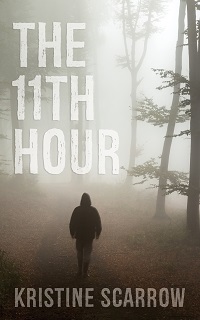| ________________
CM . . . . Volume XXIV Number 14. . . . December 8, 2017
excerpt:
Seventeen year old Annika is in love with her charming boyfriend, Dylan. The only problem is that her parents do not like the influence he has had on her. Since they have started dating, she has given up her long term sports and hobbies, cheerleading and dance, quit her job, and drifted away from her friends. All Annika wants to do is spend time with Dylan. She sees this as an indication of the strength of their love, but her parents see it as a warning sign. Annika’s life takes a serious turn when she and Dylan decide to go off to live on their own together at Dylan’s family cabin. Besides the fact that her parents have no idea where she is and are worried about her, Annika starts to feel uneasy with some of Dylan’s behaviours and comments toward her with each of the challenges they face. She tries to take the supportive, loving stance, but that does not seem to be helping at all. Things spiral out of control when Annika discovers that not only has Dylan lied to her about several important topics, he may be in trouble with the law. When she confronts him about these issues, Annika realizes that she is not able to give Dylan the help he needs, and that she may not be safe being alone with him without him receiving professional help. The book comes to a thrilling and intense climax as Annika tries to remove herself from her current situation and encourage the person she loves to seek the help he needs before it is too late. The 11th Hour is author Kristine Scarrow’s third novel. She has previously worked with the Saskatchewan Foster Families Association and is currently the writer in residence at St. Paul’s Hospital in Saskatoon. She also leads workshops on writing as a healing art. Scarrow’s own experiences with anxiety and depression as a teen have led her to write about mental illness to help break down the stigma surrounding it. She opens the book with a letter to the reader about mental illness, how it is portrayed in the novel, and how it can not only affect the person suffering from it, but also the person’s loved ones. Additionally, she briefly discusses her own experiences with mental illness and the importance of breaking down the stigma. This letter is likely to help set the context for readers and enhance their reading experience. The book concludes with an author’s note, discussion questions, and a resources section titled, “Where To Find Help”. In the author’s note, Scarrow explains that her intention behind the book is to start a conversation on mental illness. She also shares some statistics from the Canadian Mental Health Association regarding mental illness. The discussion section contains some thought provoking questions that will allow readers to dissect the important issues presented in the book. The resources section includes several websites from both Canada and the United States where teens can seek help or further information about mental health. These three sections at the end of the novel not only guide readers in taking their understanding of the text further, but they also help them continue the conversation on mental health and gain some understanding of healthy relationships and ways that they can seek help for themselves and/or others. The 11th Hour paints a realistic picture of a person suffering from untreated mental illness and shows how it can affect both the person and their loved ones. The text alternates between Annika’s and Dylan’s point of view to capture the full picture of how they are both affected. The dialogue and thoughts of each person are perfectly balanced to demonstrate the entire situation that Annika and Dylan are facing. Scarrow weaves the text together perfectly to demonstrate that Annika and Dylan both want to be a loving, caring, supportive partner, but Dylan’s untreated mental illness makes this unable to happen at the current time. Despite its relatively short length, the plot is thoroughly detailed, and the characters are realistic and well developed through the use of flashbacks, narration, and dialogue. The situations that demonstrate the conflict between Annika and Dylan are perfectly selected and detailed by Scarrow, making the scenes come to life, setting the tone, adding suspense, and creating a clear picture of Dylan’s mental illness. The book sets itself up as a suspenseful read right from the beginning when Annika and Dylan take off on their own. Readers are likely to get the picture quite quickly that things are not going to go smoothly for the young couple through the foreshadowing at the beginning of the book. The tone gets even more intense as the book continues, and readers are likely to feel at conflict with themselves whilst reading, just as Annika is—wavering between feeling empathy for Dylan and feeling worried for her safety. I believe that this book will appeal to the target audience for several reasons. The topic of mental illness is an important and timely concept for young adults to learn more about. This book will enable them to continue the conversation on mental illness for their own personal understanding and to help others. The realistically developed characters and the alternating perspectives will allow readers to gain a holistic view of Dylan’s mental illness and its effects on his relationship with Annika. Additionally, the plot is suspenseful and fast paced, which makes for an engaging and exciting read. The 11th Hour is a suspenseful, realistic, and relatable read that young adults would benefit from reading. Highly Recommended. Chasity Findlay is a high school English language arts teacher and a recent graduate of the Master of Education program at the University of Manitoba.
Next Review |
Table of Contents for This Issue
- December 8, 2017. |
